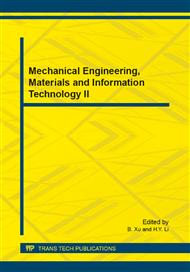p.7
p.11
p.15
p.20
p.24
p.29
p.33
p.38
p.46
Mechanical Properties of Polypropylene Fiber Concrete after High Temperature
Abstract:
With cooling tests on polypropylene fiber reinforced concrete and plain concrete that were initially subjected to different heating temperatures, the change of mechanical properties including mass loss, uniaxial compressive strength and microstructure were analyzed. The results show that the compressive strength of concrete tend to decrease with an increase in temperature. After experiencing high temperatures, the internal fibers of the polypropylene fiber reinforced concrete melted and left a large number of voids in it, thereby deteriorating the mechanical properties of concrete.
Info:
Periodical:
Pages:
24-28
Citation:
Online since:
October 2014
Authors:
Keywords:
Price:
Сopyright:
© 2014 Trans Tech Publications Ltd. All Rights Reserved
Share:
Citation:


